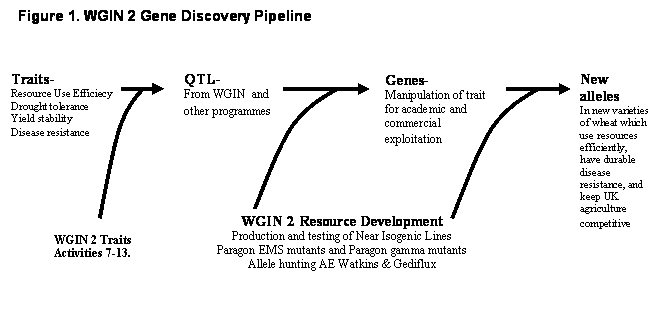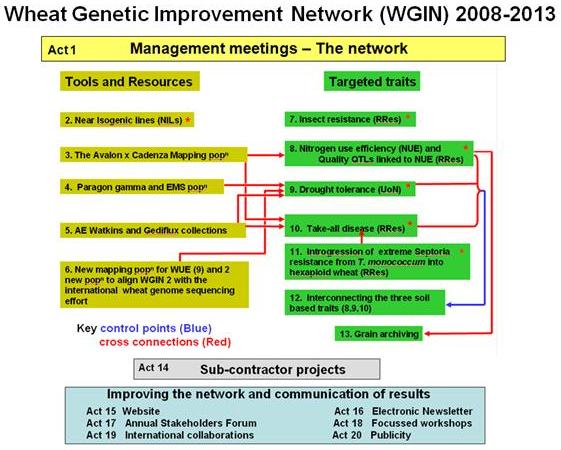Research objectives
Research effort will focus on two main topics: resource development and targeted traits. The figure below outlines the research objectives within the general organisation of the project.
A. Resource development (Objectives 2 to 6)
Background
The philosophy of resource development within WGIN is to provide a unique set of resources that enable the wheat research and breeding communities to address strategic objectives of defra for UK wheat production. With these resources we can identify and then manipulate genetic mechanisms involved in the control of resistance to biotic stress, resource use efficiency and yield stability. The outcomes of this work will strengthen the response of the UK to climate change, ensuring sustainable production, a thriving farming community and a strong rural economy. WGIN will continue to develop the following types of resource: germplasm that cannot be developed within the timeframes of most funded grants; genomic resources where the cost could not be justified for the benefit of a single piece of research; and ’off-the-shelf’ resources available immediately for spin-off projects that can be funded by schemes such as LINK. Objectives for WGIN - extending the gene discovery pipeline The resource development element of WGIN will continue to address limiting factors for the future genetic improvement of wheat. We will put tools and resources in place that enable the identification and exploitation of useful genetic variation. The roles of these resources and their place in the wider strategies necessary for the identification and exploitation of useful genetic variation in wheat are summarised in Figure 1. The rationale for their inclusion in WGIN is described below.For further information on each individual objective please go to the drop down menue.


.jpg)
